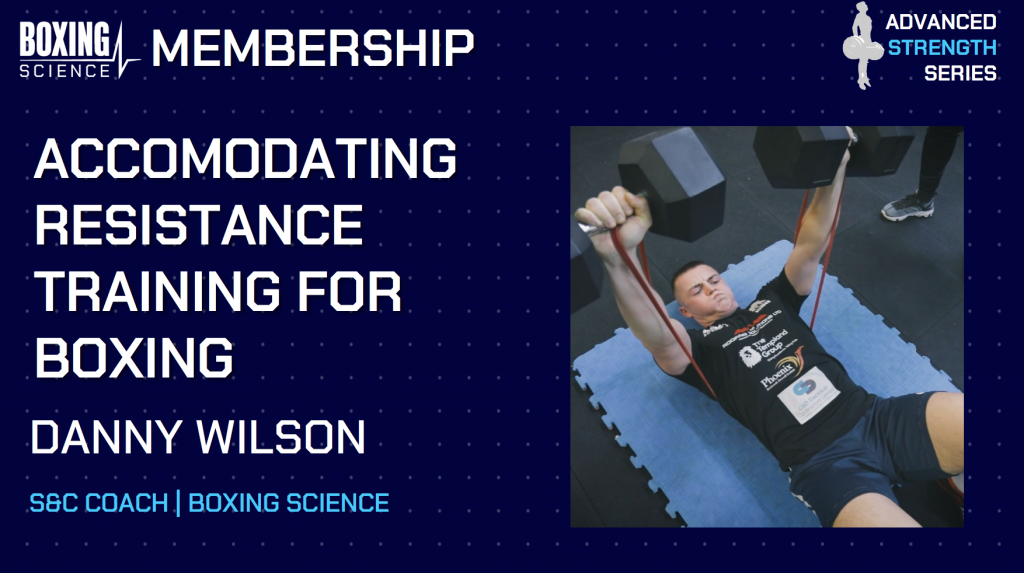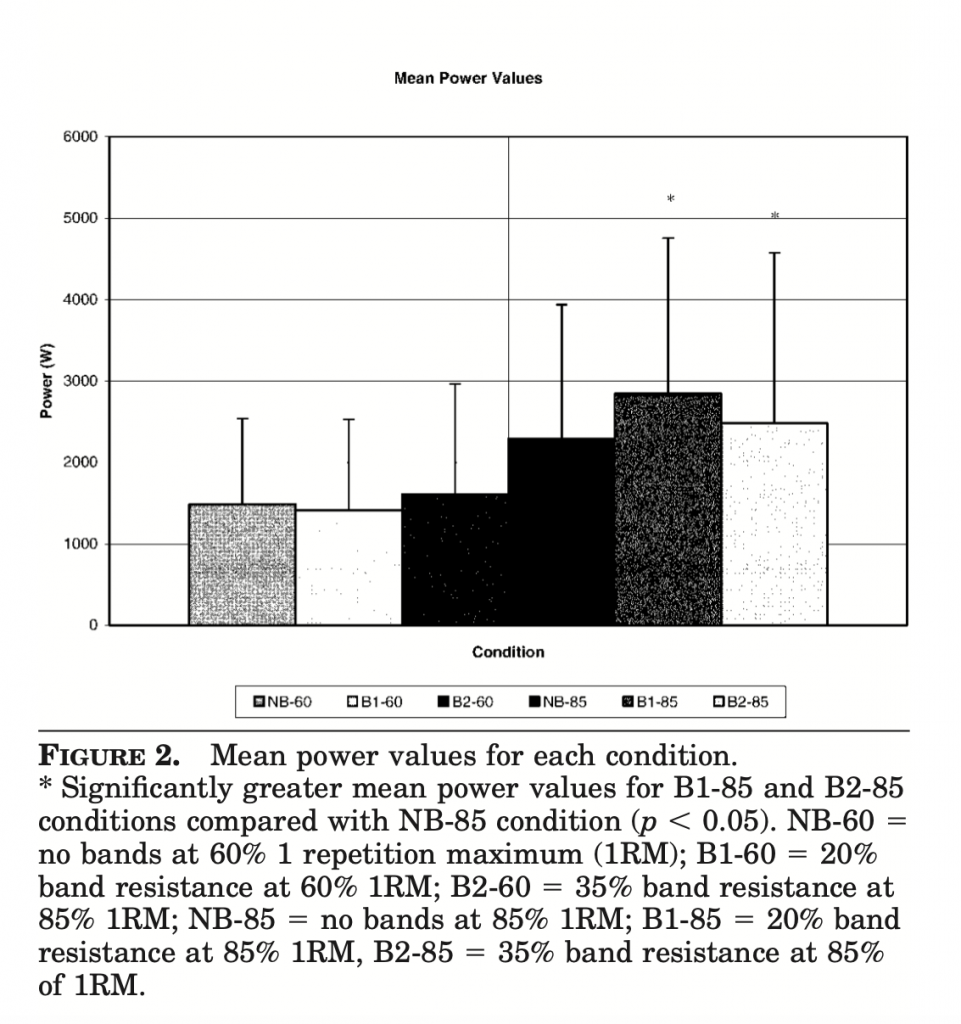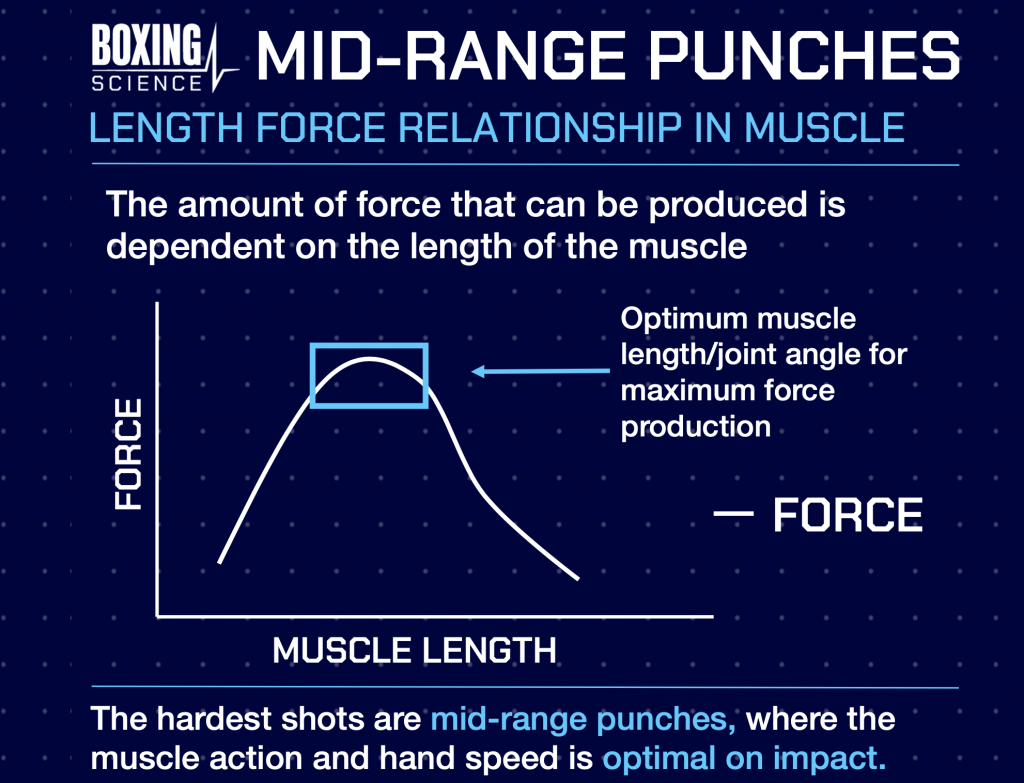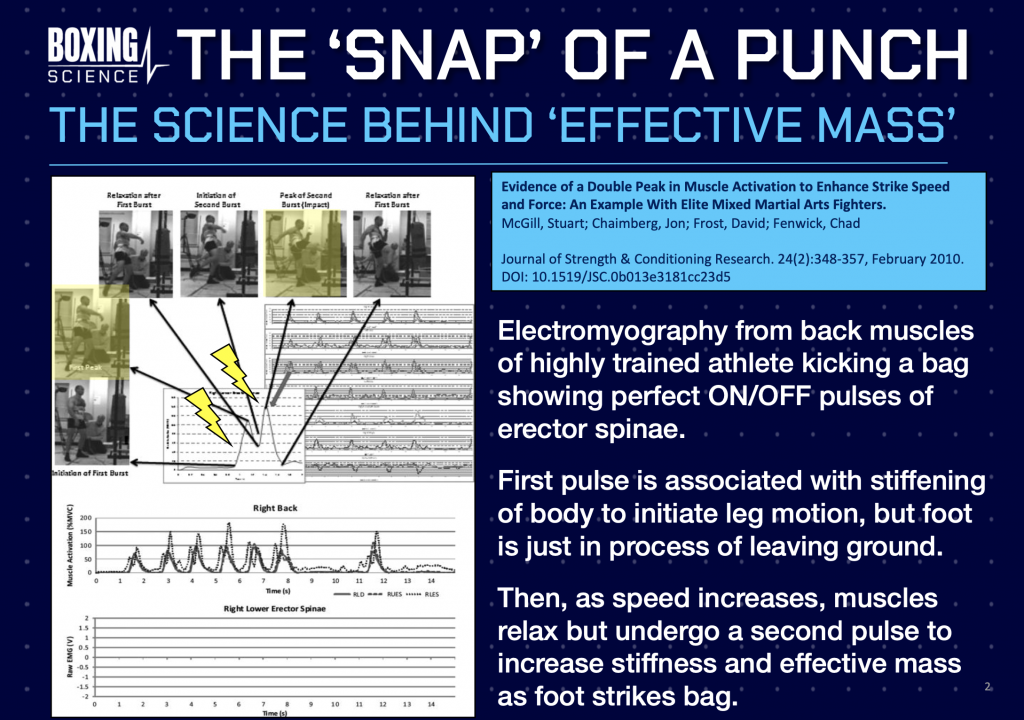ACCOMMODATING RESISTANCE TRAINING FOR BOXING
Accommodating resistance is a relatively novel training method that has been incorporated into many strength and conditioning programs across a wide range of sports.
This advanced training strategy is generally used to enhance strength and power characteristics by encouraging the athlete to generate maximal acceleration throughout the full range of motion of a lift.
Despite most of the research around this training strategy being conducted with rugby players there are considerable benefits that can be obtained from accommodating resistance and that will enhance boxing performance.
Therefore, the main learning points of this article include:
An outline of what accommodating resistance training actually entails and the scientific mechanisms that underpin adaptations gained from this training method.
The specific benefits of using accommodating resistance training for boxers.
Practical coaching points to ensure that accommodating resistance is applied safely and effectively with your athletes.

WHAT IS ACCOMMODATING RESISTANCE TRAINING?
Accommodating resistance is the term used to describe the addition of bands or chains to normal free weight exercises.
This causes the resistance of an exercise to increase with the range of motion, encouraging an athlete to apply more force at the top of the lift.
Performing lifts with this added resistance can be massively beneficial for Strength, Speed and Explosiveness.
Research has also demonstrated the application of accommodating resistance to create increased muscle activation during assistance and prehab exercises along with functioning as a potent post activation potentiation stimulus.
SCIENCE BEHIND ACCOMMODATING RESISTANCE
The general thought process, expressed in the literature, behind the use of accommodating resistance is the concept of minimising the sticking point of key lifts.
The sticking point is considered the most disadvantageous segment of a lift and is generally where athletes exhibit the slowest lifting speeds.
If a sticking point can be minimised, through the use of bands or chains, this can enable the athlete to accelerate throughout the full range of motion and thus develop strength and power over large ranges of motion.
This tends to not be the case with conventional lifts due to significant sticking points encountered and the need to decelerate the barbell when nearing the finishing position of the lift.
UNDERLYING MECHANISMS
So, we are aware that accommodating resistance can be of significant benefit for strength, speed and explosiveness….but why?
Firstly, if we consider the eccentric portion of the lifts using accommodating resistance, in particular, during the back squat.
During the lowering portion of the lift in a back squat with bands or chains, the athlete is being actively pulled down to the squat position by this added resistance.
This is said to increase the magnitude and rate at which muscles are stretched and lead to greater muscle fiber recruitment compared to standard lifts.
This high eccentric demand can also create potential for increased storage of elastic energy which can then be redirected and used during concentric (upward) phases of the lift, allowing for more forceful concentric contractions.
When comparing the normal back squat with the banded back squat, research has shown that banded conditions facilitate superior peak power and peak force values compared unbanded.
The primary mechanism suggested for these enhanced strength and power characteristics include greater mechanical advantage.
This mechanical advantage is facilitated by optimal length-tension relationships which heightens overlap of the contractile filaments of the muscle cell, allows for increased cross-bridge formation and therefore increases force output.
Additionally, shortening the deceleration phase which tends to be a prominent detractor of power outputs in standard lifts, can potentially increase the amount of time near peak velocity and therefore enhance rate of fore development.
These mechanisms combine to encourage the athlete to generate maximal acceleration throughout the full range of motion using relatively heavy loads and therefore increase strength and power.

ACCOMMODATING RESISTANCE: BENEFITS FOR BOXING
Evidently there are numerous benefits that can be derived from this training method that contribute to overall athletic performance, but how do these improve performance in the ring?
IMPROVED RATE OF FORCE DEVELOPMENT
Accommodating resistance improves rate of force development due to maximal acceleration of high loads. This is an important adaptation for boxing as a successful punching action requires large amounts of force to be developed in a short period of time, often less than 200ms.
From our own research we have identified the correlation between lower body rate of force development and punch performance. Through measuring boxers’ jump heights (a measure of lower body impulse and RFD) and medicine ball punch throws we determined that those who jump higher tend to punch harder!
Applying accommodating resistance to key lower-body lifts such as the back squat and deadlift is therefore an effective strategy for enhancing lower body rate of force development and thus punch ferocity.
MAXIMISING THE LENGTH-TENSION RELATIONSHIP
As mentioned previously the addition of banded resistance creates to conventional lifts tends to place the prime movers at a mechanical advantage.
This is due to the length-tension relationship which states that the amount of force a muscle can produce is directly related to the length of the muscle fiber and also suggests that there is an optimum length for muscles produce force (often said to be close to resting length)
A classic boxing example of the length-tension relationship is the effectiveness of mid-range punches which tend to be more powerful than short and long range blows due to the superior muscle tension displayed at this range.

Accommodating resistance enhances this biomechanical function through encouraging the athlete to generate sufficient muscle tension during each segment of the lift. This would not be the case with standard resisted lifts due to the significant deceleration associated with this form of resistance.
This is particularly beneficial for long/rangy fighters who tend to maximise their physical advantage by throwing straight shots and keeping their opponents out of range.
This training method can help these tall boxers generate maximal tension at the end ranges of these straight punches and therefore earn the respect of their opponent and keep them on the outside!
INCREASE TRICEP ACTIVATION
The triceps are often under-active among boxers largely due to the nature of the punching action.
Double peaks in muscle activation at the initiation of the punching action and on impact ultimately mean that the triceps are not recruited significantly during the middle phase of a punch where the arm is loose and relaxed.

Considering the benefits of accommodating resistance that have been discussed previously in terms of maximising muscle tension, we can use this to our advantage in upper body pressing movements to enhance activity of the tricep muscle group.
Improving tricep recruitment will improve elbow extension, and therefore create greater ‘snap’ on impact and at the end range of a punch when the arm is fully extended.
DRIVING THROUGH THE STICKING POINT
As mentioned previously, the sticking point is the most disadvantageous part of a given lift and is generally characterised by a loss of momentum through the range of motion.
The exponential increase in resistance associated with adding accommodating resistances leads to increased muscle activation and thus allows the athlete to overcome these sticking points in key lifts.
This translates to more of an indirect benefit to boxing, as overcoming sticking point, especially during upper body pressing, enables athletes to lift heavier loads in the gym.
Consistent exposure to heavier loads over time will lead to greater strength gains.
High levels of strength are strongly associated with high levels of rate of force development i.e stronger individuals tend to produce force quicker.
Improvements in rate of force development contribute massively to improved punch power as eluded to previously.
IMPROVES ECCENTRIC UTILISATION WITHOUT EXCESSIVE SORENESS
The added resistance of the bands or chains creates a much greater eccentric demand than conventionally resisted lifts.
This added demand facilitates improved eccentric utilisation and therefore enables the athlete to maximally exploit elastic energy storage and utilisation capabilities.
Improving eccentric utilisation can have a profound impact on jump height which is an indicative of lower body rate of force development characteristics.
High levels of eccentric stress, however, can contribute to severe muscle soreness especially among boxers who lack extensive strength training experience and are often adhering to a calorie deficit.
With accommodating resistance training methods we can achieve a significant high speed eccentric overload whilst avoiding near maximal loads and therefore can mitigate the degree of muscle soreness.
Ultimately, this enables us to achieve the desired adaptations, eccentrically, that contribute to enhanced concentric force and power without impairing other aspects of a boxer’s training regime.
APPLICATION OF ACCOMMODATING RESISTANCE
At Boxing Science we primarily use accommodating resistance with back squats or landmine squats, trap-bar deadlifts, horizontal pressing variations, medicine ball chest presses, kettlebell swings and landmine punches.
We tend to prefer the bands over the chains for our boxers as with this form of resistance there is an exponential increase in muscle tension throughout the range of motion, facilitating improved effective mass and snap at the end range of the punch.
SQUAT VARIATIONS
As referred to previously accommodating resistance applied to squat variations can allow for a potent stimulus to improve eccentric utilisation and lower body rate of force development.
We tend to primarily use the landmine squat when adding accommodating resistance to this movement pattern as it is a much safer means of using this training method for boxers. This is because the landmine position reduces the strain on the shoulders and elbows which can become irritated in a convention back squat set-up.
It’s important to cue the athlete to brace the core when in the starting position as the combination of the load and bands creates a significant pull from the outset.
Additionally, the athlete should really focus on controlling the eccentric portion of the lift in order to maximise its effectiveness and to avoid dropping into the ‘hole’ without control.
Driving out of the bottom position is also an important cue to communicate to your athlete when performing this exercise in order to fully exploit the stretch reflex.
TRAP BAR DEADLIFTS
We frequently use trap-bar deadlift to develop lower body strength and concentric force that can contribute to improved rate of force development and thus punch impact.
Adding the bands makes sure that maximal momentum and impulse is generated throughout the full range of motion.
For this exercise it is essential that the athlete maintains maximal tension and a solid brace throughout, especially in the top position where the bands are at their maximal resistance and tend to impart a significant pull on the athlete.
Return to the start position under control and as with any deadlift make sure to REST, RESET and then REPEAT.
HORIZONTAL PRESSING
The main horizontal pressing variations we add accommodating resistance to are the dumbbell chest press and dumbbell floor press.
The main coaching points to consider during these exercises are to pin the lower back against the ground or bench to create a solid base before forcefully pressing up.
Additionally, the athlete should really be attempting to drive through the movement, generating maximal momentum and fully extending the elbows.
When lowering the weight, don’t do so passively as this can lead to a loss in position and reduce stability when pressing. Instead think about actively bringing your chest towards the dumbbells whilst keeping your shoulder blades against the bench or floor.
Medicine Ball Chest Passes
This exercise is often used in a complex pairing with a heavier horizontal press to exploit the potentiation effect and enhanced neural drive associated with lifting heavy, near maximal loads.
The dumbbell press provides a cue, motivation and stimulus to really power through on the Med Ball Chest Pass, achieving high velocities and force outputs
This complex pair is used to enhanced the rate of force development of the upper body which is an essential characteristic for delivering short, sharp, punishing blows.
The bands also encourage the athlete to accelerate through the full range of motion when performing the medicine ball chest pass which contributes to improved snap at the end range of punches.
The main coaching cues for this one include keeping the elbows tucked and ensuring that the elbows are being fully extended in order to release the ball forcefully into the air.
KETTLEBELL SWINGS
Kettlebell swings are a great option during speed-strength phases for developing posterior chain (hamstring and glutes) power.
With this exercise we are really focusing on improving the force generated from the hip extensors.
Hip extension is an integral component of the punching action due to its significant role in transmitting force from the lower body to the upper extremeties.
Using accommodating resistance also enhances the stretch shortening cycle function of the posterior chain which contributes to increased lower body rate of force development and is particularly relevant when counter punching or when putting combinations together.
Again, its important to encourage the athlete to maintain a solid core brace and full body tension, especially at the end range of this movement and to actively resist being pulled down by the bands.
LANDMINE PUNCH
Punch specific exercises are an excellent way to bring the strength and power adaptations achieved in the gym to the punching action.
With landmine punch, we are essentially simulating performance of the back hand under load and therefore developing sport specific strength.
Availing of accommodating resistance during this movement is effective for encouraging maximal tension of the punching limb at end ranges and thus improving punch impact.
The main consideration when prescribing this movement is to not load the bar too heavy as this will lead to more of a pushing, rather than punching motion and completely nullify the purpose of this exercise.
Additional cues such as pivoting on the rear foot and pushing the hips through are also important to ensure that correct muscle sequencing of the punching action is being adhered to.
Programming these exercises at different stages of the training plan can ensure that you’re comprehensively developing strength, speed and explosiveness can be transferred to the ring, particularly the punching action.
FOR MORE INFORMATION about how to program accommodating resistance throughout a training camp and how to achieve the necessary set up to make sure this training method is effective for your athletes SIGN UP to our ONLINE MEMBERSHIP which includes a hugely informative workshop that outlines the nuances of using accommodating resistance for boxing.
SUMMARY
Accommodating resistance is an effective training strategy for developing strength, speed and explosiveness.
The main mechanisms underpinning the benefits of accommodating resistance training include: Increased rates of stretch and thus muscle fiber recruitment, minimisation of the sticking point, greater mechanical advantage and increased duration at near peak velocity, facilitating increased RFD.
Accommodating resistance is usually performed with compound lifts such as the deadlifts, back squat and horizontal press but can also be applied to landmine punches, explosive medicine ball throws and kettlebell swings.
